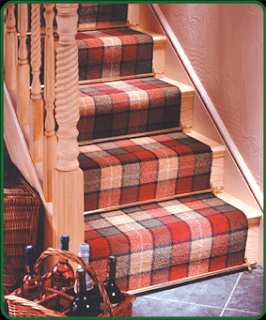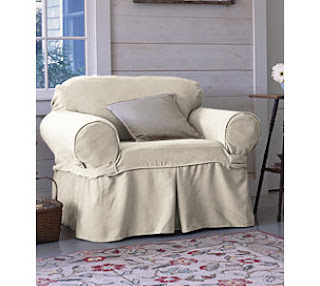
Oriental rugs can be purchased in a great variety of colors and patterns, and will add beauty and elegance to your home décor. When you decide to decorate a room, consider choosing one or more of these exciting and durable area rugs as a cornerstone for your color and design choices. If you are adding a rug to an existing decorating plan, you will have no trouble finding one that complements the choices already made. Although oriental rugs are found most often in living rooms and dining rooms, they are also a popular choice as runners for high traffic areas, for foyers, and even for bedrooms. Your home decorating scheme can include them throughout the interior of your house if you really love them.
 What is an Oriental Rug?
What is an Oriental Rug?
When the term "oriental" is used in reference to rugs, it means those rugs produced anywhere on the continent of Asia, and includes:
- Persian rugs – made in Iran (formerly Persia), the country that produces more handmade rugs than all other rug-making countries combined, and are considered by many to be the finest
- Afghanistan rugs – still woven mainly by nomadic tribes
- Indian rugs – mostly imitation of Persian designs, but of coarser wool
- Pakistan rugs – from the country that is the fourth largest rug producer in the world
- Caucasian rugs – from the region between the Black Sea and the Caspian Sea, and characterized by bright red, rust, or burgundy colors, bold geometric designs, and narrow borders
- Rugs from Egypt, Morocco, Turkey, Tibet, and a host of other Asian countries
Each country produces its own distinct style and quality of rug, although many are imitations of Persian designs, as well as modern Tibetan and Indo-Persian designs. Making rugs by hand is an ancient art, and the designs reflect the religious and ethnic structures found in the history of the countries of origin. These designs are still produced today, sometimes by hand and sometimes within a modern rug-weaving industry. The common patterns are traditional floral or garden motifs, often with a central medallion, or a geometric or curvilinear design, or central scenes that look like paintings.
How to Choose Oriental Rugs for Your Home
To decorate with oriental rugs, it is important to take both color and design into consideration. The color should be harmonious with the other colors in the room in which the rug is to be placed and should repeat the dominant or accent colors, or include shades of one or more of them. If the colors are compatible with other colors in the room, even a modern home can be enhanced by the popular traditional designs in oriental rugs.
When choosing an appropriate design, consider how you are going to use the rug. If the center of the rug is going to be very visible, a medallion or central motif or scene is a happy choice. If, however, the center of the rug is going to be under a dining room table or under a bed, it would be better to chose one with a repetitive design or one where the most detail and interest is in the borders.
As well, very colorful rugs with very busy designs can bring a subdued room to life; simple designs and a limited color palette are better in a room that is already colorful and busy. Geometric designs work best in new or modern homes, and curvilinear designs are more appropriate for old and traditional homes. It is most important that the rug does not clash, in either color or pattern, with any other fabric in the room in which it is to be used.
How to Find a Good Buy
A reputable dealer or outlet will give you the "good buy" oriental rug for which you are shopping. Before you go to the store, give some serious thought to the color, design and size of rug you need, and how much you are willing to pay. If you have clear ideas of what you want and have made some decisions beforehand, it will reduce the dizzying number of choices facing you when you have to make your selection.
An antique oriental rug is the most expensive rug, of course, and even if cost is not an issue, authenticity is. Documentation for an antique rug, including the appraised value, is sometimes available, but if not, you can ask for an independent appraisal or a guarantee if you don’t know the dealer.
Most people, however, are not buying an antique, and are simply interested in choosing a beautiful rug and getting good value for their money. It is possible to find a discount oriental rug, or a wholesale buy if you shop around. Whether the carpet is cheap or expensive from your point of view, it is important that you understand the factors that affect the cost.
These are:
- Natural or synthetic fibers
- Method of production – handmade or machine woven
- Intricacy and rarity of design
- Region of origin
Wool is the most expensive fabric, but it is warm, durable, dirt-resistant, fire-resistant, and easy to clean, and has become the standard by which all rugs are judged. Other natural materials used in oriental rugs are cotton and silk, and blends of wool and silk. These materials are more durable than synthetics and never release chemical gases into the air, which is significant to people with health concerns. If you are looking for a less expensive rug, synthetic fibers rather than natural are the answer.
The knots per square inch (kpsi) in an oriental rug is a good indication of its quality, and a high number of knots is usually an indication of durability as well as higher cost.
Expect slight inconsistencies and at least one imperfection in a hand-woven rug originating from a country in the Middle East. The philosophy, from an Islamic point of view, is that only God is perfect, and, therefore, nothing man makes should be perfect. A flaw will be carefully woven into each rug.
"Handmade" means that the rug has been constructed by hand, but it does not necessarily mean that it has been hand-knotted. "Hand-hooked" means the yarn has been inserted into a backing with a hand-held tool. Handmade, hand-knotted rugs are superior in quality to those made by machine made because a rug is more durable when each knot has been individually tightened. Expect to pay more for them.
You can beautify your home with oriental rugs if you give some careful thought to the colors and designs that will work best with your style preferences. By taking time to shop around and make sure that you are buying a quality rug from a reputable dealer, you will be able to enjoy your beautiful rugs for many happy years.











